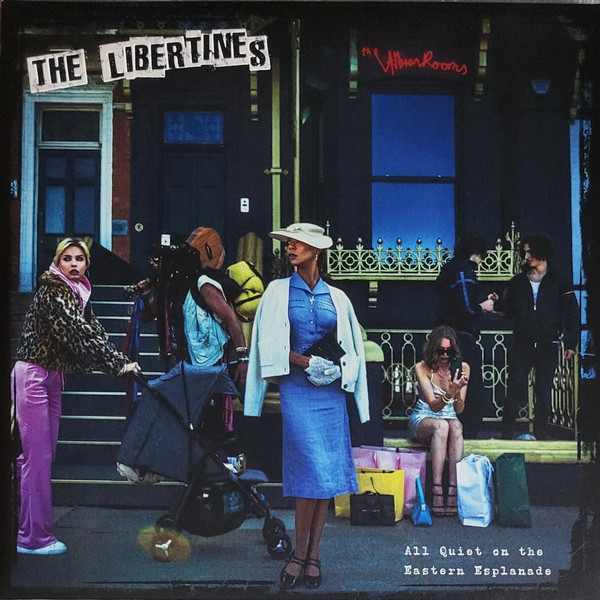The Libertines have long been defined by their chaotic energy, turbulent personal lives, and raw storytelling. But what happens when the drama fades, and the band finds stability? Their fourth album answers that question with a collection of songs that reflect a more mature, contented group, yet still carries the spark that made them legends.
The Libertines: Quiet on the Eastern Front
Recorded at their Albion Rooms hotel and studio, the new album features Carl Barat, Pete Doherty, John Hassell, and Gary Powell in arguably their best shape yet. With sold-out tours and fresh dates added, the band is thriving both personally and professionally. But can a group known for raw, tumultuous anthems create compelling music in an era of calm?
“Run Run Run” and Breaking from the Past
The lead single, “Run Run Run,” initially feels like a by-the-numbers Libertines track, complete with literary references and a simplistic chorus. However, repeated listens reveal its depth. Carl delivers the clever line, “Cause tonight we are gonna spend / all tomorrow’s happiness,” with trademark wit, offering a reflection on escaping the past. It’s a nod to the band’s evolution, as they distance themselves from their once self-destructive personas.
Highlights and Fresh Twists
• “Mustang”: This track swings with layered vocals and a lush female chorus. Carl playfully leads the verses before delivering a biting outro. The song paints a vivid picture of Tracy, a dreamer trapped in the mundane.
• “Have a Friend”: A quintessential Libertines tune updated for modern times, with references to the war in Ukraine. Pete’s poignant delivery contrasts with the song’s driving rhythm and catchy progression.
• “Night of the Hunter”: One of the album’s standout tracks, blending strings, a theremin, and dark imagery. With lyrics referencing guilt and redemption, it evokes a haunting atmosphere reminiscent of the film it shares a name with.
Mature Themes, Evolved Sound
While earlier albums often felt like a peek into Pete and Carl’s therapy sessions, this record expands its thematic range, touching on topics like immigration and societal disillusionment. The album’s polished production contrasts with the gritty edges fans might expect, but this refinement reflects the band’s current state: calmer, more confident, and less inclined toward self-destruction.
Nostalgia and Evolution
Tracks like “Oh Shit” evoke the energy of early hits like “Don’t Look Back Into the Sun,” while “Man with the Melody” slows things down with a piano-driven melody and shared vocals among the band. For fans of their earlier chaos, “Be Young” provides a welcome throwback with its ska-infused energy and celebration of youthful recklessness.
A Glimpse of the Past, A Step into the Future
The album’s closing track, “Songs They Never Play on the Radio,” is a masterpiece. Written by Pete since 2006, it could easily sit alongside Blur’s finest, blending poetic lyrics with a superbly crafted melody. Pete and Carl’s duet is a reminder of their enduring chemistry, signing off the record on a high note.
The Libertines Today: Contentment with an Edge
This album marks a new chapter for The Libertines, one where they trade chaos for contentment without losing their creative spark. The band may no longer be the reckless twenty-somethings of Up the Bracket, but they’re still delivering music with heart, soul, and a touch of the anarchy that defined their youth.
With calmer seas ahead, The Libertines have proven they can thrive in a new era, celebrating the journey while keeping their eyes on the horizon.
The Good Ship Albion sails on—stronger and steadier than ever.







